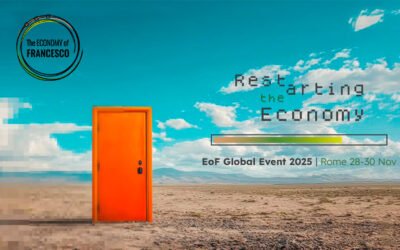 «In the waters of the Sun Moon Lake, the green mountains of the central-eastern region of Taiwan are reflected.This big and beautiful island of the South China Sea was rightly named Formosa by the Portuguese sailors. Its fame attracts millions of tourists every year, also from mainland China. The steep slopes are covered with lush vegetation in the midst of which I can recognize clumps of bamboo, maybe 15 meters tall.
«In the waters of the Sun Moon Lake, the green mountains of the central-eastern region of Taiwan are reflected.This big and beautiful island of the South China Sea was rightly named Formosa by the Portuguese sailors. Its fame attracts millions of tourists every year, also from mainland China. The steep slopes are covered with lush vegetation in the midst of which I can recognize clumps of bamboo, maybe 15 meters tall.
James Liao, a man in his forties, of a slim build like many of his countrymen, was waiting for us at the entrance of a small pier where we can sit on the stern of the Holy Love. It is a motorboat that has been recently rebuilt and he is justly proud of it: it is the only one of the whole lake that is accessible by the disabled in wheelchairs.
‘The special access port, the ramp, the special hooks to anchor wheelchairs during navigation have cost a lot, and this was one of the reasons why it wasn’t understood at the beginning. But it had to be done, if it is true that this initiative was created to overcome all forms of discrimination. This way 200 disabled people have been able to reach our camp already.’
Another instant of discrimination that James wanted to overcome was against the minority of the indigenous people inhabiting these places: the five jobs created in the camp are for them.
 The camp is located in a small clearing in the flat bottom of a lovely gulf, virtually inaccessible by land. The surrounding forest and the birdsong create a striking contrast to the opposite shore of the lake, occupied by houses, roads, shops and a huge skyscraper, where the best sights are dominated by flashy five-star hotels. In the middle of the clearing there is a simple wooden house, allowing thirty young people to stayin two dormitories, and next to it there is an open-air structure that serves as a kitchen. All around, from the mountain’s side, some white pointed gazebos have been placed offering shelter from the sun or rain, depending on the circumstances; a corner is occupied by rays of black plastic crates black piled up so as to ensure that the higher ones, filled with humus, are level with the hands of a seated person: all designed to allow the disabled to also avail of the “green therapy”. The plants are well aligned and sprouting from the crates in confirmation that the therapy has been recently practiced.
The camp is located in a small clearing in the flat bottom of a lovely gulf, virtually inaccessible by land. The surrounding forest and the birdsong create a striking contrast to the opposite shore of the lake, occupied by houses, roads, shops and a huge skyscraper, where the best sights are dominated by flashy five-star hotels. In the middle of the clearing there is a simple wooden house, allowing thirty young people to stayin two dormitories, and next to it there is an open-air structure that serves as a kitchen. All around, from the mountain’s side, some white pointed gazebos have been placed offering shelter from the sun or rain, depending on the circumstances; a corner is occupied by rays of black plastic crates black piled up so as to ensure that the higher ones, filled with humus, are level with the hands of a seated person: all designed to allow the disabled to also avail of the “green therapy”. The plants are well aligned and sprouting from the crates in confirmation that the therapy has been recently practiced.
 By the lake, near the pier, there are some twenty lightweight metal canoes arranged in good order. ‘It is titanium, recovered 30 years ago from the carcasses of the planes of World War II by the founder of the camp, Father Richard, an American from Wisconsin who has left everything to devotehimself to us Taiwanese, beginning with the most feeble ones. Before me he was the manager of Special Need Centers (centres for disadvantaged people) of the Diocese of Taichung, and he had thought of this place to give them the opportunity to make learning experiences from which they would otherwise have been excluded. Actually I have never met him, but a short time ago I was filled with joy when I discovered one of the old documents that was precisely about a boat accessible for the disabled.’ The figure of Father Richard has played a role also in the choice of faith of James, followed by the decision to leave a well-paid job in a bank and go to study pedagogy of the disadvantaged and then work for them.
By the lake, near the pier, there are some twenty lightweight metal canoes arranged in good order. ‘It is titanium, recovered 30 years ago from the carcasses of the planes of World War II by the founder of the camp, Father Richard, an American from Wisconsin who has left everything to devotehimself to us Taiwanese, beginning with the most feeble ones. Before me he was the manager of Special Need Centers (centres for disadvantaged people) of the Diocese of Taichung, and he had thought of this place to give them the opportunity to make learning experiences from which they would otherwise have been excluded. Actually I have never met him, but a short time ago I was filled with joy when I discovered one of the old documents that was precisely about a boat accessible for the disabled.’ The figure of Father Richard has played a role also in the choice of faith of James, followed by the decision to leave a well-paid job in a bank and go to study pedagogy of the disadvantaged and then work for them.
Every word of James’ transmits enthusiasm for all that means respect for the environment, care for the spirit, hospitability, and attention to others. It is really fascinating! But this is also an enterprise, so I ask for information on its economic management. ‘It is a source of great pride for us that we are now already in surplus, thanks to the revenue from the excursions and sports activities that we offer to the general public (down in the city we have two people working for us, in contact with tourist agencies). And so, instead of the diocese supporting us, as in the past, it is now us offering our profits, namely 30% of the all we get. Another 30% goes to the Centers for Social Needs, 30% is reinvested in the company and the last 10% goes to the employees, in a pattern that we have adapted from the Economy of Communion, as we want to follow its principles.’ And in order to be clear, all this is written very visibly on the billboard posted at the entrance of the boat introducing passengers to the logic of Holy Love».
Source: EoC online




0 Comments